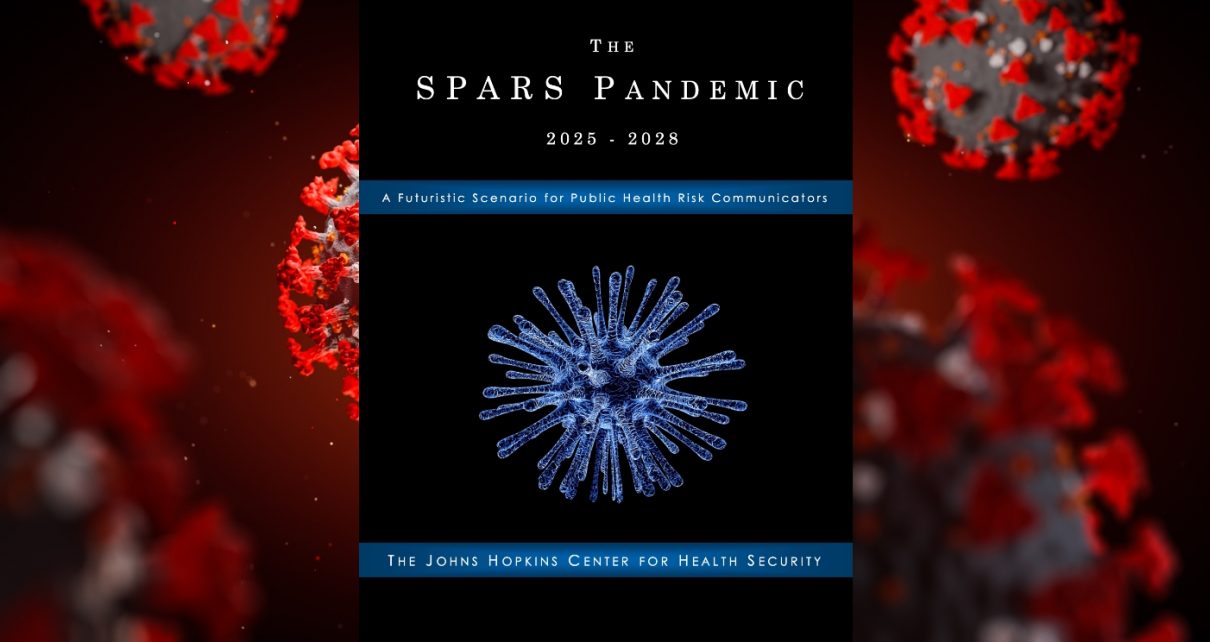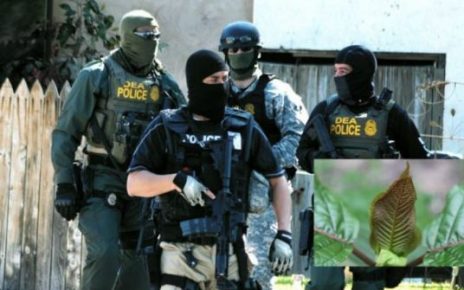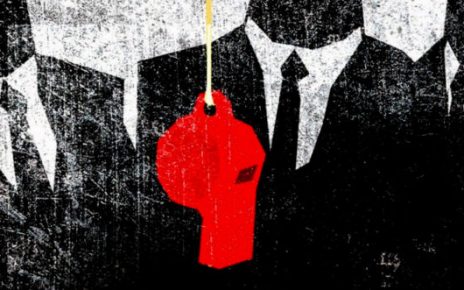In 2017, the Johns Hopkins Center of Health Security ran a simulation of a coronavirus pandemic known as SPARS. What can we learn from this exercise?
In the months since SARS-CoV-2 was declared a pandemic, researchers and journalists have spent countless hours searching for relevant information that might shed some light on the origins of what has come to be known as COVID-19. This research has led some to a number of simulations and exercises which “war gamed” a potential viral outbreak and asked how the people and institutions of the world would respond.
As TLAV has extensively documented, the pandemic exercises are numerous. The most well-known simulation is likely Event 201, a high-level pandemic exercise organized by the Bill and Melinda Gates Foundation partnered with the Johns Hopkins Center for Health Security and the World Economic Forum on October 18, 2019. Event 201 simulated how the world would respond to a fictional coronavirus pandemic known as CAPS which swept around the planet. The simulation imagined 65 million people dying, mass lock downs, quarantines, censorship of alternative viewpoints under the guise of fighting “disinformation,” and even floated the idea of arresting people who question the pandemic narrative.
Another exercise known as Crimson Contagion simulated an outbreak of a respiratory virus originating from China. From August 13 to August 16, 2019, Trump’s Department of Health and Human Services (HHS), headed by Alex Azar, partnered with numerous national, state, and local organizations for the exercise. According to the results of the October 2019 draft report, the spread of the novel avian influenza (H7N9) resulted in 110 million infected Americans, 7.7 million hospitalizations, and 586,000 deaths.
Another simulation known as Clade X took place on May 2018. This event examined the response to a pandemic resulting from the release of a fictional virus known as Clade X. In the simulation, the virus was released by a terror group called A Brighter Dawn. As the outbreak spread through the United States, the participants asked what would be needed if the President issued a federal quarantine, noting that authorities would need to “Determine (the) level of force authorized to maintain quarantine.” The Clade X exercise also resulted in the federal government nationalizing the healthcare system.
A lesser known exercise involving the Johns Hopkins Center for Health Security took place in 2017. This exercise also involved a coronavirus pandemic sweeping the world between 2025 and 2028. While the exercise has received very little press, the details and findings of the simulation are extremely relevant to COVID-19.
The SPARS Pandemic, 2025-2028
In October 2017, the Johns Hopkins Center for Health Security released their report, SPARS Pandemic, 2025-2028: A Futuristic Scenario for Public Health Risk Communicators. The report is written from the perspective of someone in 2030 who is looking back on a pandemic which swept around the world between 2025 and 2028. The document states that the creators identified major socioeconomic, demographic, technological, and environmental trends which they believe are likely to emerge during this period. The two trends they said are likely to influence public health emergencies are “varying degrees of access to information technology” and increased “fragmentation among populations along social, political, religious, ideological, and cultural lines.”
The document states:
“Ultimately, a world comprised of isolated and highly fragmented communities with widespread access to information technology—dubbed “the echo-chamber”—was selected as the future in which the prospective scenario would take place. From this point, scenario-specific storylines were then developed, drawing on subject matter expertise, historical accounts of past medical countermeasure crises, contemporary media reports, and scholarly literature in sociology, emergency preparedness, health education, and risk and crisis communication. These sources were used to identify communication challenges likely to emerge in future public health emergencies.”
The exercise describes the world of 2025 as “more connected, yet more divided” with near universal access to wireless internet. The report discusses a new technology known as internet accessing technology (IAT), which is described as “thin, flexible screens that can be temporarily attached to briefcases, backpacks, or clothing and used to stream content from the internet.” New social media platforms also affect the digital landscape, including ZapQ, a platform that “enables users to aggregate and archive selected media content from other platforms and communicate with cloud-based social groups based on common interests and current events.”
While this has allowed for an increase and ease in sharing news, many people choose to “self-restrict the sources they turn to for information”, creating the echo chambers.
In mid-October 2025, three deaths were reported at a church in St. Paul, Minnesota. Two church members recently returned from a trip to the Philippines. While their deaths were initially assumed to be influenza, laboratory results later disproved this theory. Eventually, the Centers for Disease Control and Prevention (CDC) confirmed that the three patients were infected with a novel coronavirus, known as the St. Paul Acute Respiratory Syndrome Coronavirus (SPARS-CoV, or SPARS).
Interestingly, the report notes that “early case fatality estimates were inflated” with the CDC estimating SPARS case fatality rate of 4.7%, and the WHO saying 14-15% and over 50% for people over the age of 64. Later studies would provide a more accurate estimate of only 0.6%. This simulated scenario mimics what we have seen with COVID-19. The CDC and WHO both initially claimed the fatality rate was much higher before later admitting that the rate was below 1%.
The report goes on to detail how public health and medical professionals were not successful in stopping the spread of SPARS. By time Thanksgiving and Black Friday arrived the transmission of SPARS accelerated due to asymptomatic individuals traveling. By mid-December, SPARS cases were reported in 26 states, as well as Mexico, Canada, Brazil, Japan, and several European countries.
Eventually, an animal vaccine is seen as a potential solutions. Ranchers had used the vaccine to treat a SPARS-like respiratory coronavirus disease in cows and pigs in the Philippines. The vaccine manufacturer, GMI, claimed the vaccine would help, but clinical trials reveal side effects, including swollen legs, severe joint pain, and encephalitis leading to seizures or death. There was no data available on the long term effects of the GMI vaccine. Despite this controversy, CynBio, a US-based pharmaceutical corporation developed a SPARS vaccine based on the GMI technology.
Much like in real life, the simulation states that the Department of Health and Human Services agreed to provide liability protection to the vaccine manufacturer CynBio in the event someone is harmed from the vaccine. This is the same situation we have seen with COVID-19, where U.S. government officials have acknowledged that the vaccine companies are going to be given indemnity against potential liabilities arising from their products.
The simulation makes it clear that health officials have planned for potential vaccine injuries and the objection to vaccine mandates. In one section the report asks, “How might federal health authorities respond to critics who propose that liability protection for SPARS vaccine manufacturers jeopardizes individual freedom and wellbeing?”
The report goes on to discuss the creation of a therapeutic called Kalocivir and how a growing number of individuals begin to challenge the use of pharmaceuticals and vaccines. These individuals who promoted “natural cures such as garlic and vitamins” were less likely to take Kalocivir or seek medical attention for SPARS-like symptoms.
Concerns about Kalocivir increased in February 2026 when a viral video shows a three-year-old boy projectile vomiting after taking a dose of the therapeutic. The clip is shared across the U.S. with the hashtags #NoKalocivir and #NaturalIsBetter. Social media activists began to use ZapQ groups to share the video and also place IAT screens on the backs of their jackets and backpacks while looping the video. By the summer the video is the most shared “Zap clip” among junior high and high school students.
Another telling line from the Center for Health Security report notes that even though SPARS cases had begun to drop off, the “persistent social media buzz around the pandemic ensured that public anxiety remained high.” Again, this mirrors what we are seeing with COVID-19.
By May 2026 the CDC admitted that SPARS was only fatal in 0.6% of cases in the United States. This reality was reflected on social media, where much of the public began to recognize that SPARS was not as dangerous as they had been told. “Combined with persisting doubts about Kalocivir and the lack of a commercially available SPARS vaccine, the new, lower case fatality rate estimate led the public to grow increasingly hostile toward continued SPARS messaging,” the report states.
The report details how the CDC, the FDA, and other government agencies worked with “social media experts” to develop public health messaging campaigns about SPARS, Kalocivir, and the forthcoming vaccine, Corovax. Much like in the Event 201 exercise, the SPARS simulation involved enlisting the help of “well-known scientists, celebrities, and government officials” to make videos and give interviews promoting the government messaging campaigns.
The public did not respond well to the campaigns and instead took to social media to express their disapproval. The mainstream media even began to question the government narrative and the safety of the Corovax. The opposition to the Corovax merged with the growing anti-vaccination movement which emerged on social media. These groups were made up of Muslims who opposed the vaccine; African Americans, who did not trust the government due to fears of experimentation on the black community; the alternative medicine community; and the “anti-vaccination” community.
These vaccine opponents spread information claiming that Corovax was not properly tested and had unknown side effects. National polls conducted in mid-August 2026 showed that 68% of US citizens had seen a post or read a comment from someone expressing anti-Corovax sentiments. Even the Japanese government rejected the Corovax, leading to viral video clips of Japanese news conferences.
In response to the Corovax opposition, the U.S. government began working with social media and search companies to target advertisements to individuals searching for “anti-vaccination websites.” The CDC also began mining data from public social media sources for “positive stories” they could promote via social media. The U.S. government also asked healthcare providers to grant access to patients’ electronic health records (EHRs) in an attempt to determine the number of individuals in high risk populations in particular areas.
Aftermath: Long-Term Side Effects, Lawsuits and a Loss of Trust
The report describes how adverse side effects began to emerge as more Americans received the vaccine. Parents claimed their children were experiencing neurological symptoms similar to those seen in the animals injected with the GMI vaccine. By May 2027, parents began filing lawsuits and demanding a removal of the liability protecting the pharmaceutical companies who developed Corovax. The report states that “concern was particularly high among some African American parents who continued to question the government’s motives regarding the Corovax vaccination campaign.”
By the end of 2027, new neurological symptoms began to appear in people who had taken Corovax. “After showing no adverse side effects for nearly a year, several vaccine recipients slowly began to experience symptoms such as blurry vision, headaches, and numbness in their extremities,” the Center for Health Security wrote. The report says that by 2030 it was still unclear if the vaccinations were to blame for the side-effects.
The social media backlash caught the HHS off guard as they faced pressure to award compensation to those experiencing long-term effects from Corovax. The public increasingly held negative opinions regarding the vaccine and what they perceived as indifference to the victims.
As the report wraps up it examines how the world looks from 2030, five years after the SPARS pandemic began. While the pandemic officially ended in 2028, cases exist in 14 countries across Europe, Africa, and Asia. WHO experts anticipate that future outbreaks will continue to emerge unless countries maintain widespread vaccination coverage.
As the public finally goes back to “normal life” they begin to focus their frustrations on politicians and agency representatives who they blame for exaggerating the severity of the event. Eventually, several high-ranking officials within the CDC and FDA are forced to retire. However, there appears to be a lack of accountability as there is “little desire” to “rehash the events of the past several years.”
Of course, the simulation states that “conspiracy theories also proliferated across social media, suggesting that the virus had been purposely created and introduced to the population by drug companies or that it had escaped from a government lab secretly testing bioweapons.” These sort of accusations have also been lobbed at researchers during the COVID-19 crisis and used to justify censorship.
While the “Echo Chamber” exercise is as a fictional scenario, it is important to understand what the researchers at the Johns Hopkins Center for Health Security have observed. While these events are not intended to be a prediction of things to come, history has shown that simulations and exercises of this sort can often offer a window of how governments and private institutions will respond in times of crisis to come.





as a potential solutions > as a potential solution
https://www.thelastamericanvagabond.com/spars-pandemic-2025-echo-chambers-vaccine-opposition/
This is fascinating but my question is, what are they doing/going to differently this time in the “live” edition to ensure a different (aka their desired) outcome?
Great summary. And let’s not forget that such cunning capacity to predict goes back to the advent of computer sciences in the fifties. This brings me back to an article I had read around this time last year, it is from the New Scientist in England, and it’s dated October 2019 (…), overall well worth the read.
https://www.newscientist.com/article/mg24332500-800-ai-can-predict-your-future-behaviour-with-powerful-new-simulations/
https://lawfulpath.com/ref/sw4qw/index.shtml?ct=t(EMAIL_CAMPAIGN_4_27_2021_13_13)&mc_cid=0115aa64e8&mc_eid=646d1ec8be
Six months later, the correlation between the SPARS 2025-2028 Pandemic game plan and COVID-19 are even more relevant. Keep up the great work at TLAV!
This is the blueprint but of course they will call it a “drill”
I think this “virus” is just a distraction for something much greater, financial collapse. Political plausible deniability will be used. This “virus” is needed to bring about some very deep social & political changes. The west & their social security systems are well living beyond their time spans. Nuclear energy plants are coming to the end of their lives in Europe. The west has been living well beyond its means for too long, now there must be pay back. The western countries are sleepwalking into penury & destitution.
https://lawfulpath.com/ref/sw4qw/index.shtml?ct=t(EMAIL_CAMPAIGN_4_27_2021_13_13)&mc_cid=0115aa64e8&mc_eid=646d1ec8be